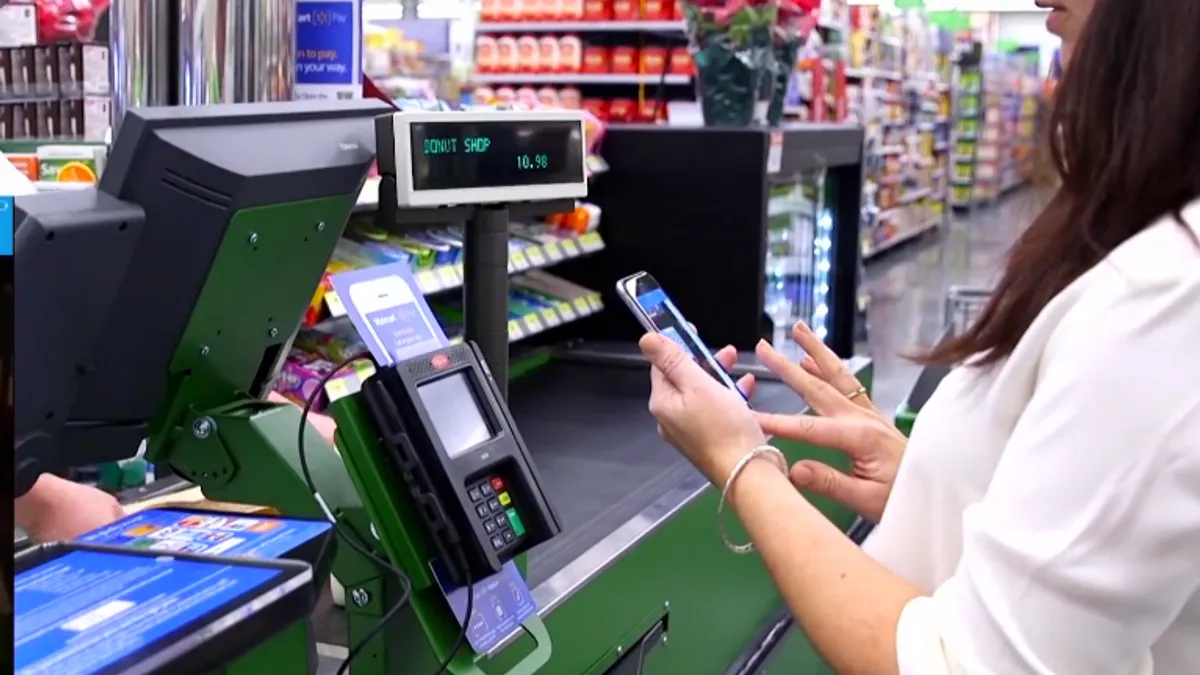Dive Brief:
-
Cashier-less checkout systems for retail and grocery are expected to process more than $78 billion in transactions by 2022, up from an anticipated $9.8 billion this year, according to a new study from Juniper Research.
-
Though only a few such checkout solutions exist today — among retailers like Walmart and Amazon — they will be deployed at more than 5,000 retail outlets over the next five years, according to the report.
-
The number of consumers using checkout apps is expected to grow from just under 4 million this year to more 30 million in 2022, the report added.
Dive Insight:
We've heard a lot about what Amazon is doing with Amazaon Go, and how Walmart is challenging them with Scan & Go — not to mention automated checkout systems like the one Panasonic demonstrated at a Japan convenience store, or the one Toshiba has put into a grocery store in New York. But the fact is that there has been very little real deployment and commercial use of these systems so far.
According to Juniper, the limited adoption of cashierless checkout hardware has to do with the cost and complexity of infrastructure integration and bringing these systems into wider use. The research suggests that checkout apps and automatic scanning, both capabilities that can ride on individual consumer smartphones, could be responsible for much of the initial growth in this market.
"These have lower upfront costs than setups like Amazon Go or Panasonic’s robotic checkout, and can be used as information and promotion platforms, which increases overall spending," the report states. Juniper estimated that these technologies will drive an average increase in revenue of more than $300 per shopper per year by 2022.
Yet, as these apps take off, they will probably give more retailers the confidence to try and expand other types of so-called "invisible" payment systems in their stores.
The research also suggested that as human cashiers move out of the checkout line, new technologies, from mobile point of sale to automated inventory checking, are transforming that role from cashier to advisor, allowing them to provide a more mobile and personal service. This has been demonstrated in the last year by companies like Salesfloor and Tulip Retail, which are bringing technology tools to retailers to help them better train and equip their in-store staff.













